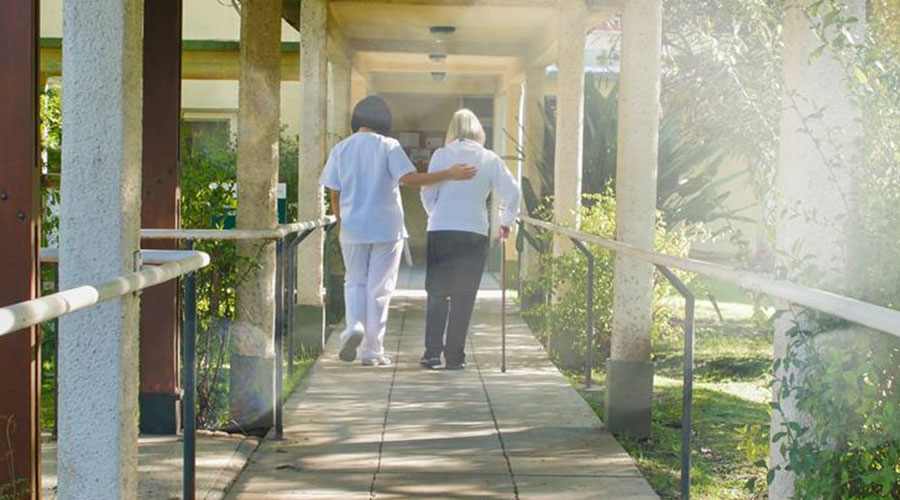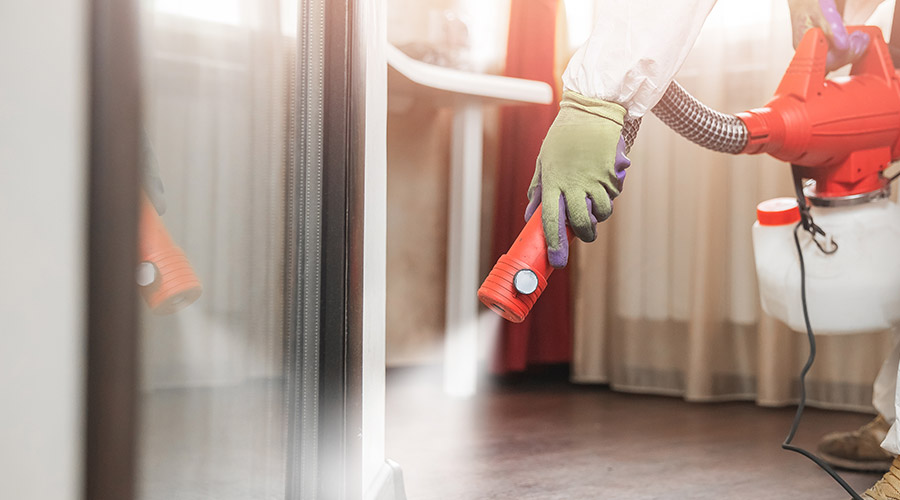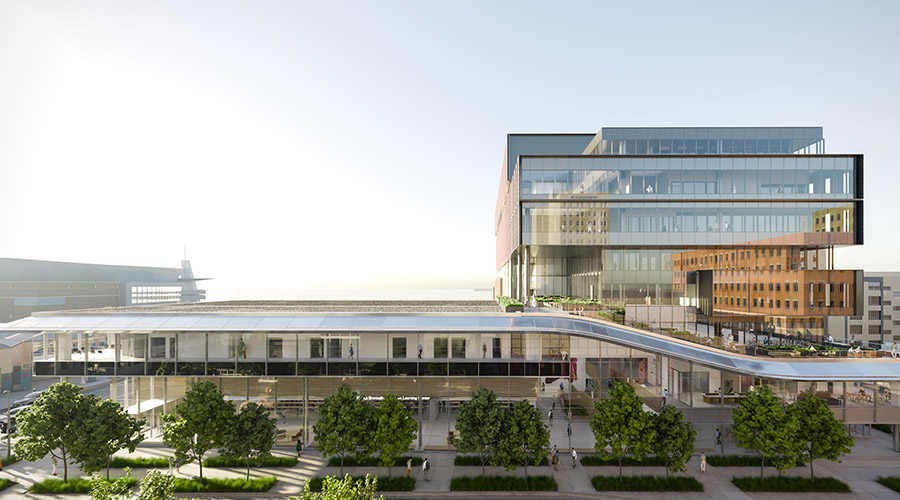“Imagine if the arts, in service to our health, were reliably delivered on a day-to-day basis to ease some of the world’s enormous suffering.” — “Your Brain on Art” by Susan Magsamen and Ivy Ross
Modern medicinal practices are increasingly moving toward a comprehensive approach to health and wellbeing by treating the whole person instead of a set of symptoms. As members of the healthcare construction industry, architects and designers have a somewhat unnoticed role in this initiative.
A holistic approach to medicine includes art and design because it can “help the body heal but also mend the mind and lift the spirit,” say Magsamen and Ross.
“Design is being used increasingly often to alter specific behaviors, mediate interpersonal interactions, and affect patient outcomes,” adds Dr. Diana Anderson.
It is no longer a secret that a growing body of research points to the way color, design and light can improve recovery, boost mood and reduce mental exhaustion. If healthcare facility managers implement thoughtfully designed spaces, they can transform the overall well-being of patients, staff and caregivers.
Design for health and well-being
Research demonstrates that a person’s environment directly impacts their overall health. Many organizations are studying the way evidence-based health and wellness interventions can be incorporated into design and building construction.
The International Well-Building Institute developed The WELL Building Standard, which details the many ways environmental factors impact bodily processes and functions.
“Stress, unhealthy diets … and exposure to environmental pollutants negatively affect the cardiovascular system,” states the organization’s standard.
Meanwhile, environmental toxins, diet, stress and sleep quality can impact the nervous system. By understanding the way building design influences recovery and prevents adverse health outcomes, healthcare facilities managers and designers can implement strategies to improve stakeholders’ overall health and well-being.
Humans are hardwired to seek out nature because of its inherent ability to calm the soul. But most people spend the majority of their lives indoors.
A connection to nature can lead to “relaxation, stress relief, lower blood pressure, and heart rate, decrease in chronic pain, improvement in cognitive functioning, increased positive emotions, and reduced fatigue, aggression, and sadness,” states “The International Journal of Environmental Research and Public Health.”
Biophilic design that includes plants, natural lighting and relaxing soundscapes can provide proven clinical benefits such as reducing migraine headaches and chronic pain, as well as improving depressive symptoms. Operational strategies for infection prevention make it challenging for hospitals to incorporate true natural elements within the building, but artwork and wall graphics referencing nature can be just as effective.
Sleep is also crucial to physical health and overall well-being. It also promotes healing and recovery, so maintaining circadian rhythm is critical for occupants in a clinical setting.
“The circadian rhythm can be affected by environmental changes and spontaneous activities like light exposure, diet, and exercise,” according to a 2023 study by Frontiers in Pharmacology.?Dimmable lights and zero blue bulbs are a cost-effective way for managers to create natural lighting cycles artificially. Access to adequate nutrition and providing accessible ways for patients and staff to exercise naturally and safely also can improve sleep quality in the hospital.
Implementing wellness design
One area in which holistic design can be enhanced within a hospital is in staff spaces. Employee morale often is not a priority in healthcare design, but a positive patient experience is mostly determined by how well the patient or caregiver interacts with the staff.
?Healthcare professionals experience high levels of stress, job dissatisfaction, mental fatigue, burnout, and mental exhaustion, according to the National Institute of Health. This can lead to higher rates of medical error, hospital-associated infections and higher patient mortality. Efficiently designed workstations and private breakrooms with access to natural light have been proven to reduce rates of burnout and improve job satisfaction.
The study also found that providing easier access to supplies, medications, equipment and other work areas in a workstation layout is essential. Minimizing walking distance between spaces and optimizing workflow can enhance staff efficiency and reduce physical strain. Access to green and natural spaces also lowered stress and improved staff mental health.
Implementing strategies from the hospitality industry and focusing on staff well-being can reduce burnout and turnover while improving the patient experience. For example, St. David's Surgical Hospital emphasized hospitality with its design and installation. The facility installed a two-story water feature and roof gardens to welcome patients and staff with calming sounds and a more natural environment.
Caregivers and spaces for them are also important in hospitals. When focusing on the patient experience, it is vital for facility managers and designers to consider caregiver needs regarding hospital layout and amenities. Over time and after numerous additions, hospital buildings can become a confusing maze of hallways, hard-to-find specialists and staff-only rooms, which cause difficulty navigating through a building.
If caregivers or patients have trouble reaching their intended destination, they can become confused, agitated and even frustrated, which can ultimately impact the staff. To mitigate this problem, managers can simplify their layout and include clear signage and landmarks to reduce wayfinding issues. Design teams also should consider using the environment to reduce stress so the building can guide occupants through its integrated architectural gestures.
Challenges and benefits
When choosing whether to complete a new building project, hospital leaders face two significant operational challenges: cost and regulatory compliance. Many hospitals must stretch budgets for new projects while adhering to local, state and federal regulations on healthcare delivery and facility operations. Historically, hospitals operate at low-profit margins, which means decision-makers must make project choices that provide the best return on investment (ROI).
Investing in the well-being of patients, staff and caregivers can lead to better overall outcomes for hospitals and healthcare facilities. Enhancing the hospital environment through carefully chosen designs can improve staff productivity and patient recovery rates, reducing costs associated with staff turnover and patient readmissions. Ultimately, this can lead to improved Consumer Assessment of Healthcare Providers and Systems scores, enhanced loyalty in the community’s patient population and stronger ROI for hospital administrators.
New advances in healthcare technology, like artificial intelligence, automation and robotic devices, will streamline administrative tasks such as patient check-ins, assist in diagnostics and surgeries and improve patient monitoring. In the face of a technological revolution, maintaining human connection ensures that patients, staff and caregivers feel safe, respected and well-cared for.
It is imperative for healthcare facility managers to consider the overall experience of everyone in their facilities. Taking time to care for the well-being of patients, staff and caregivers can increase staff morale, community loyalty and patient recovery rates. It also can lead to a stronger bottom line for hospitals by reducing costs associated with staff retention and patient throughput. Art and design can revitalize everyone’s physical, mental and emotional health by making the world a little more beautiful.
Bryan Ruby is a senior architect with BHDP Architecture.

 Barriers to Infection: Rethinking Mattress Cleaning
Barriers to Infection: Rethinking Mattress Cleaning Over 1 Million Individuals Affected in Community Health Center Data Breach
Over 1 Million Individuals Affected in Community Health Center Data Breach Prospect Medical Holdings to Sell Crozer Health to Non-Profit Consortium
Prospect Medical Holdings to Sell Crozer Health to Non-Profit Consortium The Top States for Pest Infestations
The Top States for Pest Infestations Ground Broken on Wichita Biomedical Campus Project
Ground Broken on Wichita Biomedical Campus Project